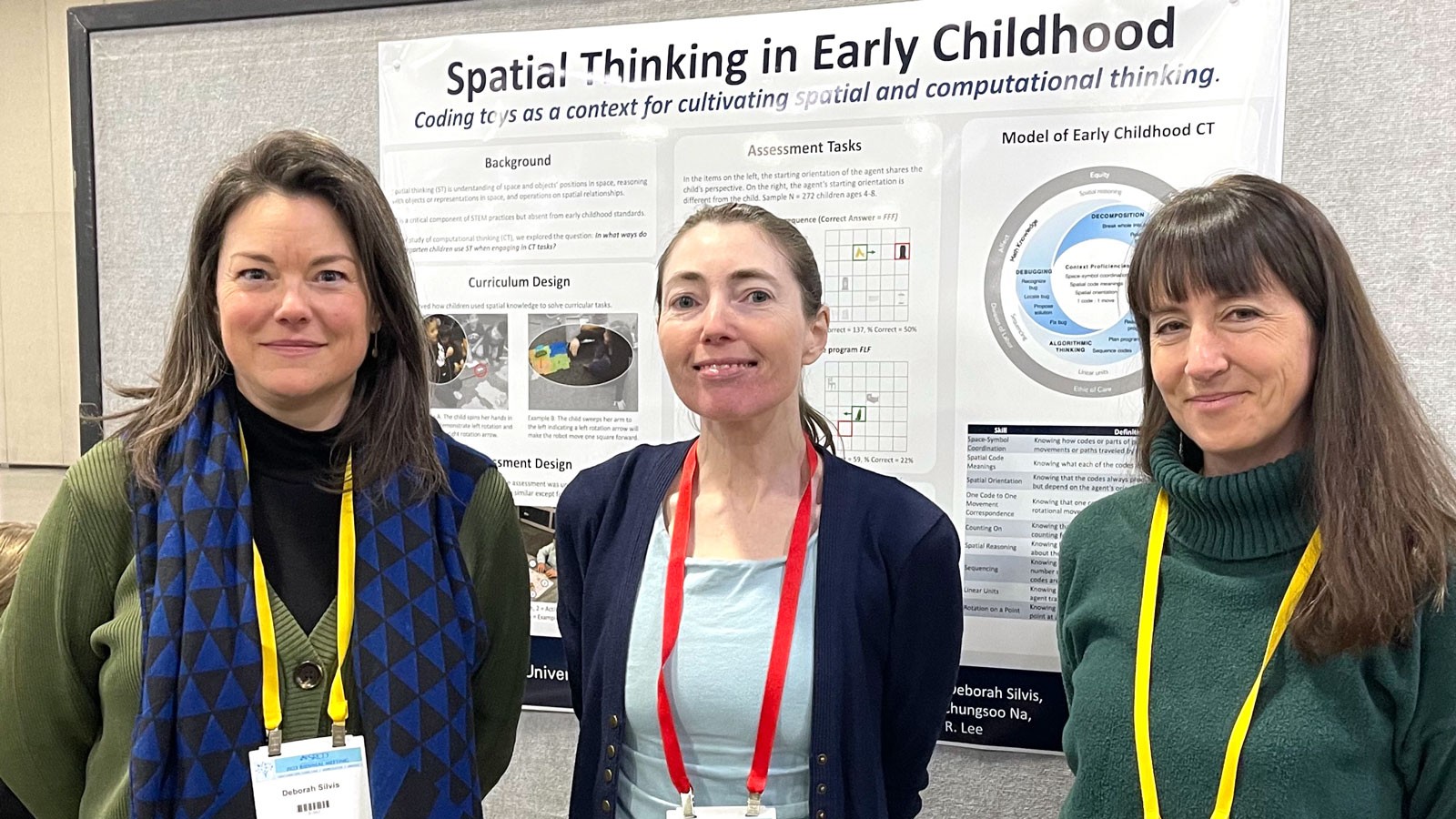USU Researchers Study Elementary Students' Computational, Spatial Thinking With $1.5M NSF Grant
By Allyson Myers |
Deborah Silvis, Jody Clarke-Midura and Jessica Shumway present research on computation thinking among elementary students. The project was recently awarded a $1.5 million grant by the Nation Science Foundation.
Education and learning science researchers at USU have received a $1.5 million grant from the National Science Foundation to research how children develop computational thinking in early elementary school settings.
To help young students develop a solid foundation in an increasingly digital world, there has been a push for elementary students to learn basic computer science. However, educators and researchers do not yet have research-based frameworks to understand how children develop computer science skills and ways of thinking, making it difficult to create and evaluate effective curriculum to teach these skills.
Several USU researchers are collaborating with educators to learn how children develop computational and spatial thinking when learning to code. Because teachers need frameworks for understanding how students’ computational thinking develops, this research is essential for high-quality teaching, curriculum, standards and assessments on a topic that is becoming more and more prevalent in schools.
The research team comprises:
- Principal investigator Jessica Shumway, associate professor in the USU School of Teacher Education and Leadership.
- Co-principal investigator Jody Clarke-Midura, associate professor in Instructional Technology and Learning Sciences at USU.
- Deborah Silvis, assistant professor in Early Childhood Education at the State University of New York at Cortland.
- Willa van Dijk, assistant professor in Special Education and Rehabilitation Counseling at USU.
Elementary educators involved in the project include teachers at Edith Bowen Laboratory School and Hillcrest Elementary School in Logan.
About the new project, second-grade teacher Joey Kozlowski said: “We are curious about an interesting developmental shift that occurs somewhere in this 5- to 8-year-old age range where students are able to abstract their physical-spatial knowledge (tangible interfaces) to a digital-spatial context (screen-based interfaces). The work from this project may provide valuable insight on what students in these age ranges are able to do in both types of interfaces, and what prerequisites precipitate a successful transition from physical-spatial to digital-spatial knowledge.”
Together, these researchers and educators are designing mathematics lessons that integrate coding robot educational toys and computer programming to engage students in mathematical and computational thinking simultaneously. Over the project’s four years, the team will conduct several design studies, which are cycles of designing, implementing, analyzing and improving lessons, in first- and second-grade classrooms, studying children’s ways of thinking throughout.
Additionally, the research will focus on the integration of computer science and mathematics, as well as language development for emerging bilingual students.
In a previous project studying the development of computational thinking in preschool and kindergarten students, Shumway, Clarke-Midura, and their research team learned that spatial reasoning is critically important for young children’s engagement in coding and development of computational thinking. As they extend their work to first- and second-graders, the team is motivated to learn from the children how they best develop spatial thinking when learning to code and how it both supports and builds on computational thinking.
This research will provide early elementary educators and curriculum designers with a framework for understanding children’s development of computational thinking with a focus on necessary language learning and spatial thinking skills, informing future standards, curricula, teaching practices and assessment. The project will also provide valuable information about how to integrate computational thinking into early mathematics education in feasible, accessible ways.
Students gather around to learn about spatial thinking when learning about computer science skills.
WRITER
Allyson Myers
Public Relations and Marketing Assistant
Emma Eccles Jones College of Education and Human Services
allyson.myers@usu.edu
CONTACT
Alicia Richmond
Director of Public Relations & Marketing
Emma Eccles Jones College of Education & Human Services
alicia.richmond@usu.edu
TOPICS
Research 878stories Education 332stories STEM 163stories Teaching 152storiesComments and questions regarding this article may be directed to the contact person listed on this page.









